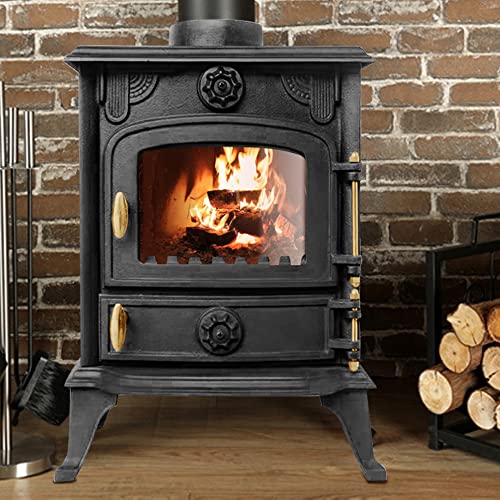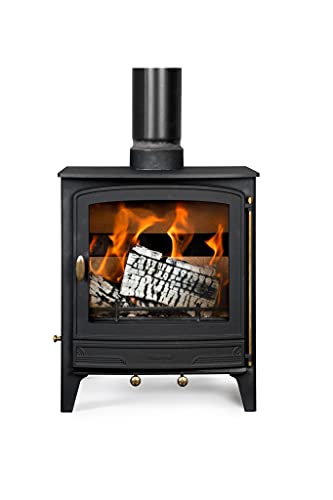4 Dirty Little Secrets About Multi Fuel Stoves For Sale Industry Multi…
페이지 정보

본문
 Small 3kw multi fuel stove Fuel Stoves For Sale
Small 3kw multi fuel stove Fuel Stoves For SaleSmall multi fuel stoves for sale let you enjoy the convenience of burning multiple types of smokeless fuels. They are a versatile device that can be used in a variety of rooms or home decors.
 If you reside in a region where smoke is controlled, consider a 5kw defra multifuel stove-approved stove, such as the Stovax Stockton 5 to burn wood and other non-smoking fuels legally.
If you reside in a region where smoke is controlled, consider a 5kw defra multifuel stove-approved stove, such as the Stovax Stockton 5 to burn wood and other non-smoking fuels legally.Canister Stoves
Canister stoves are powered by fuel stored in sealed canisters such as propane, isobutane, or a combination. The most well-known stove for backpacking is the canister stove, which offers a competitive fuel efficiency and are easy to operate. They are the best choice for summertime excursions or trips where you need to keep your pack weight at a minimum or for those looking for a simple system. However, they are not as effective in the harsh winter conditions and are not the ideal choice for expeditions at high altitudes.
Certain canister-fuel systems like the Jetboil MiniMo System or MSR WindBurner System come with an integrated design which attaches directly to the fuel canister. This creates an extremely compact and lightweight system. This can save space however it leaves the canister open to the elements. It is less resistant to windy conditions. Soto's non-integrated WindMaster stove, on the other hand, offers a more resilient pot support design that helps keep the canister close to the burner for better heat control in the windy conditions.
Many stoves with canisters struggle in cold temperatures. When temperatures drop and the pressure decreases, so does the temperature in the canister, which could cause poor performance or even failure. The MiniMo pressure regulator addresses this issue by ensuring steady heating even at temperatures that are subfreezing.
Liquid fuel stoves can be refillable and come with a separate fuel bottle. They are able to be used for a wider variety of uses. They can utilize white gas, isobutane/propane blends, Kerosene, and some even use gasoline that is not leaded (the MSR WhisperLite International is an excellent example). These types of designs are ideal for backpackers who will be in remote areas where it can be difficult to locate fuel canisters that have been prefilled.
A few backpackers also choose wood-burning stoves. They are very efficient in terms of energy usage however they add a lot to your pack weight and bulk. You can also find a variety of stoves for backpacking that are self-contained and burn wood or other biomass for fuel, such as the Solo Stove Lite above. These stoves are ideal for backpacking trips that are shorter and they don't provide the same features as a liquid-fuel or canister system.
Liquid Fuel Stoves
Liquid fuel multi fuel stove defra approved-fuel stoves differ from stoves with canisters. They use an engine that maintains pressure in the fuel container and forces it into a small nozzle, where it gets burned. They are better suited to cold weather camping and hiking and can be used even in temperatures below freezing. They can also be filled much more quickly than canisters, since you can simply open the lid and multi fuel stoves for Sale pour in more. White gas is used in the majority of stoves that use liquid fuel. It is a highly refined fuel that contains very few or no impurities. It burns clean and hot at temperatures that are below freezing. Some can also run on less expensive and dirtier fuels such as diesel or kerosene.
The disadvantage of these stoves is that they tend to be heavier than canister stoves and they have a lot of parts and moving parts that have to be cleaned, primed or replaced over time. In the event of wind, they can be more difficult to use because the pumping motion could cause the flames to flicker or even smoke. Many also require a priming procedure which involves burning a drip or two of fuel in a cup beneath the burner to heat it up and transform it from a liquid into a gas.
Liquid fuel stoves are great for backpacking and camping in winter at high elevations because they can operate well even in freezing conditions in which stoves that use canisters have a hard time. They are also more stable than canisters, as they sit closer to the ground and have large stove legs that serve as sturdy platforms. Some are as stable and cast iron multifuel stove as Trangia stoves X2 and can be used with the original Trangia burner, if you have a Trangia adaptor.
Most of these stoves burn multiple fuel types through one nozzle, however some models have an integrated shaker jet similar to MSR which makes them better suited to igniting white gas. These stoves are also great for international travel, as canister fuel and even outdoor supply stores can be difficult to find. There are many excellent, lightweight, easy to use liquid fuel stoves on the market. The Kovea Hydra is one of the top.
Gas Stoves
Gas stoves are an essential part of American cooking. It's difficult to find a home in the US without one, and they're popular for many reasons: They heat up quickly, utilize natural gas (typically cheaper than electricity) to provide energy and don't require special installation or venting.
However, a growing number of scientists are raising concerns over the emissions they release. Gas stoves emit carbon monoxide, formaldehyde, and nitrogen dioxide at levels above EPA guidelines. These gases are associated with a range of health problems, including learning deficits, lung infections, and a greater chance of developing asthma in children. Even when they're not in use, they release methane which is a greenhouse gas that is regarded to be more powerful than carbon dioxide, but doesn't stay in the atmosphere as long.
The commotion has sparked debate over whether or not gas stoves should be banned and lawmakers have weighed in on the issue. A group of Republican senators has introduced two bills that would prevent the CPSC from baning them, while House Republicans have enacted legislation to safeguard consumers' right to choose the cooking equipment they want.
Many homeowners are considering changing their gas stoves to electric or changing their existing stoves to reduce harmful emissions. Some are still reluctant to let go of their favorite kitchen gadget. Here's what you need to be aware of the dangers of these stoves.
The emissions of a stove are influenced by the type of food that is being cooked and the temperature setting, but they can still generate a significant amount of nitrogen oxide in operation. According to a study scheduled for 2020 by Rocky Mountain Institute, Physicians for Social Responsibility and Mothers Out Front, boiling water or baking cakes in a gas oven may produce NO2 levels that are above outdoor air quality standards. However, roasting chickens and using high-temperature settings can make these numbers explode.
If you are interested in cutting back on your emissions, it's important to buy stoves that have an efficient design and to follow a few simple energy-saving tips. For example, keep burners clean so that they're running as efficiently as they can. It's best to use your burners when you need them, since over-use could use up to 40 percent of their energy.
Portable Stoves
A small stove is an ideal accessory to your camping gear, especially if you're always in motion. You can cook and drink water while hiking, cycling or hiking. Stoves are powered by a variety of fuel sources like charcoal, wood, propane and gas. The cost of the stove will depend on the fuel, as well as how much energy it uses and its efficiency.
Small multifuel stove stoves can be very affordable, particularly if you select one that utilizes propane gas or natural gas. They're also extremely efficient, using a fraction of fuel to produce the same heat as other stoves. Gas stoves have a larger cooking surface than other options. This allows you to cook two large pots or pans simultaneously.
Although you may think it is costly to buy a butane-burner however, they are an excellent alternative in situations of emergency where electricity isn't readily available. Its small size and lightweight weight make it easy to store and transport. It is also a quick-heating kind of stove, meaning you can cook your food in a matter of minutes.
In remote areas, however, it can be difficult to locate stoves that burn liquid fuel. They're usually self-pressurizing, so you don't require a pump to start them however you may require refilling them after use. The intensity of the flame can be adjusted, so you don't have to reduce the amount of heat produced while simmering.
Solid fuel stoves can be light and easy to use, however they are not suitable for windy or rainy conditions. They're generally more smelly than other types of camp stoves, and they require you to bring a supply of Esbit fuel tabs.
A wood-burning stove has been popular in recent years due to the fact that it makes use of an easy and sustainable fuel source. They may be limited in their ability to control flame and heat, and they may also be subject to local fire bans. To prevent the spread of creosote as well as flammability issues, they must be maintained in a controlled manner. Be sure to adhere to all height and clearance requirements and ensure that you have a way to safely remove smoke and ash.
- 이전글5 The 5 Reasons Mesothelioma Settlement Is A Good Thing 23.11.23
- 다음글7 Secrets About Window Repairs Near Me That Nobody Will Share With You 23.11.23
댓글목록
등록된 댓글이 없습니다.